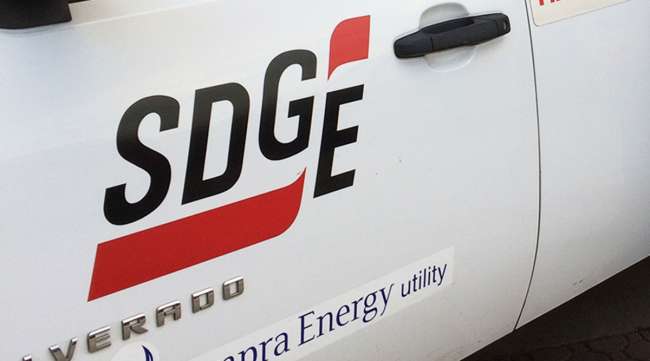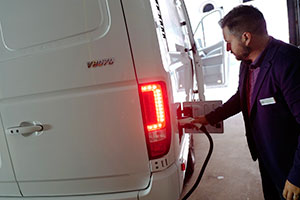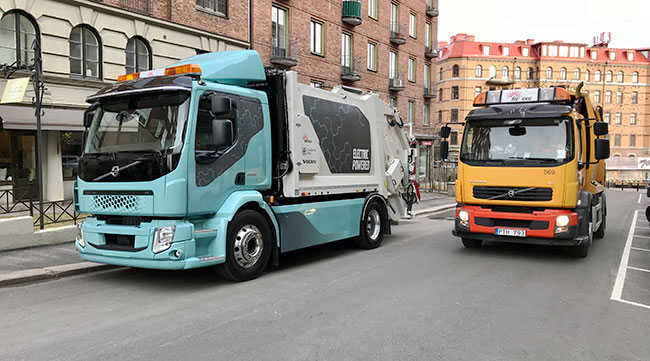San Diego Rolls Out $107.4 Million for Large Vehicle Charging Stations

[Stay on top of transportation news: Get TTNews in your inbox.]
The California Public Utilities Commission has approved a program that will see San Diego Gas & Electric build 3,000 electric vehicle charging stations for medium- and heavy-duty vehicles including school buses, delivery trucks and forklifts, and SDG&E customers will be the ones to pay for it.
The still unnamed program will build the charging stations in about 300 locations in the San Diego region over the next five years in an effort to meet a legislative mandate to reduce greenhouse gas emissions in California.
“When you look up at the sunny San Diego sky, you may not realize our air quality was recently rated poorly due to ozone pollution” by the American Lung Association, SDG&E communications manager Jessica Packard said in an email. “We are taking a major first step in helping to reduce these emissions by electrifying some of the largest contributors to our air pollution, large vehicles and equipment.”

Mark Lennihan/Associated Press
The initiative will cost $107.4 million, which will be paid by ratepayers.
Under Senate Bill 350 passed in 2015, the public utilities commission has directed the state’s investor-owned power companies to come up with clean transportation initiatives to promote the transition to electric vehicles. The program, approved Aug. 15, is the first large-scale initiative of its kind in the region that focuses on medium-duty and heavy-duty, vehicles. SDG&E will now look at potential sites among local businesses and public agencies to build the charging stations.
Transportation accounts for about 40% of greenhouse gas emissions in the state and almost 50% in SDG&E’s service territory. More than 100,000 commercial vehicles weighing from 6,000 pounds to more than 33,000 pounds drive along the roads in the San Diego region.
“SDG&E’s [medium-duty, heavy-duty] initiative would provide EV charging stations to support large equipment and vehicles that pollute our air, therefore reducing harmful emissions,” Robert Kard, air pollution control officer at the County of San Diego Air Pollution Control District, said in a statement.

Electric trucks (Associated Press)
The program also supports electrification of refrigerated semitruck trailers that transport perishable goods. At least 10% of the program’s budget must serve transit buses and school buses.
SDG&E officials estimate the program will add $4.57 per year on the bills of average residential customers who use 500 kilowatt-hours per month, starting in 2022. That works out to about 38 cents more per month.
All told, as many as 6,000 vehicles can be supported by the initiative.
The final details of the program, hammered out between SDG&E and 15 stakeholders that included consumer groups and environmental organizations, calls for at least 30% of the funding to be invested in communities most affected by air pollution, such as Barrio Logan, Logan Heights and Sherman Heights.
The initiative also includes money for a pilot program that uses a technology in which electric school buses can provide energy back to the power grid. Called V2G, the pilot would see the big batteries in the buses charged when renewable energy is abundant — during the day, for example, when solar production in the state surges — and then send the electrons back to the grid when demand peaks.
That can lower the costs of managing California’s power grid and potentially deliver a source of revenue to fleet managers and school districts.
Approval of an Diego Gas and Electric’s proposal is a significant step towards cleaning the air and meeting climate goals in the San Diego region and California. #CleanAir for the win. https://t.co/tkqTvpdqit — Union of Concerned Scientists (@UCSUSA) August 18, 2019
“SDG&E’s program will fill a critical gap in the San Diego region, expanding access to cleaner air and cleaner transportation, while supporting a cleaner electrical grid,” said Max Baumhefner, senior attorney for the Natural Resources Defense Council, one of the groups involved in the CPUC proceeding.
California has set a goal to deploy 250,000 charging stations in the next six years. There are slightly more than 21,000 charging plug stations in the state now.
Earlier efforts from SDG&E concentrated primarily on passenger vehicles. Under the utility’s “Power Your Drive” program, SDG&E has installed about 3,000 chargers in apartments, condominium complexes and workplaces.
Overall, a review by the Union-Tribune earlier this year showed various state agencies have committed $2.46 billion in public funds for various electric vehicle programs. Of that, the CPUC has set aside $1.048 billion on electric vehicle initiatives with a large share going to building charging stations.
Distributed by Tribune Content Agency, LLC




